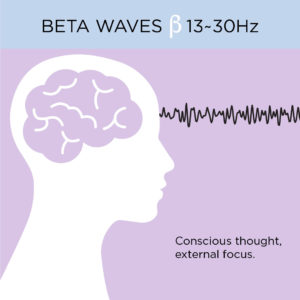
The Brain Wave Spectrum
Ever wondered what’s happening to your brain in Meditation?
Spiritual awakening is the ultimate intention for the eastern traditions which we in the west have immersed in through mindfulness practice. Yet the western scientists have discovered the benefits of a daily meditation practice include increased focus and emotional stability. As well as reduce the symptoms of anxiety, improve resiliency, minimise the effects of stress, improve creativity and our memory.
What is happening in our brain during meditation that creates these results? Through studies where scientists map our brain waves which is basically electromagnetic energy, meditation alters the electrical activity of your brain. There are five different brain waves as seen in the graphic above that fluctuate according to how you feel and what you do. In practises such as yoga nidra meditation we can move the brain waves from a higher frequency to a lower frequency, changing how we feel.
How does this happen?
As different parts of the brain get stimulated the frontal lobe, (planning and reasoning) switches off which helps you to relax. The thalamus (motor and sensory signals) pathways to the cerebral cortex slow down eliciting calm.
The parietal lobe (sense of time) slows down helping lower stress and anxiety and the reticular (brain alertness and response) slows down creating calm and allowing you to feel peaceful.
What are the types of brain waves?
Delta ½ – 4Hz(Deep unconscious, healing)
Theta 4 – 8Hz (Deep Relaxation, creativity)
Alpha 8 – 13Hz (Dreamy state of relaxation) NS calm
Beta 13 – 30Hz (Thinking mind)
Gamma 30 – 100Hz (Perception, focus, anxiety)
A brief insight into the effects of meditation.
Try it today!









No Comments